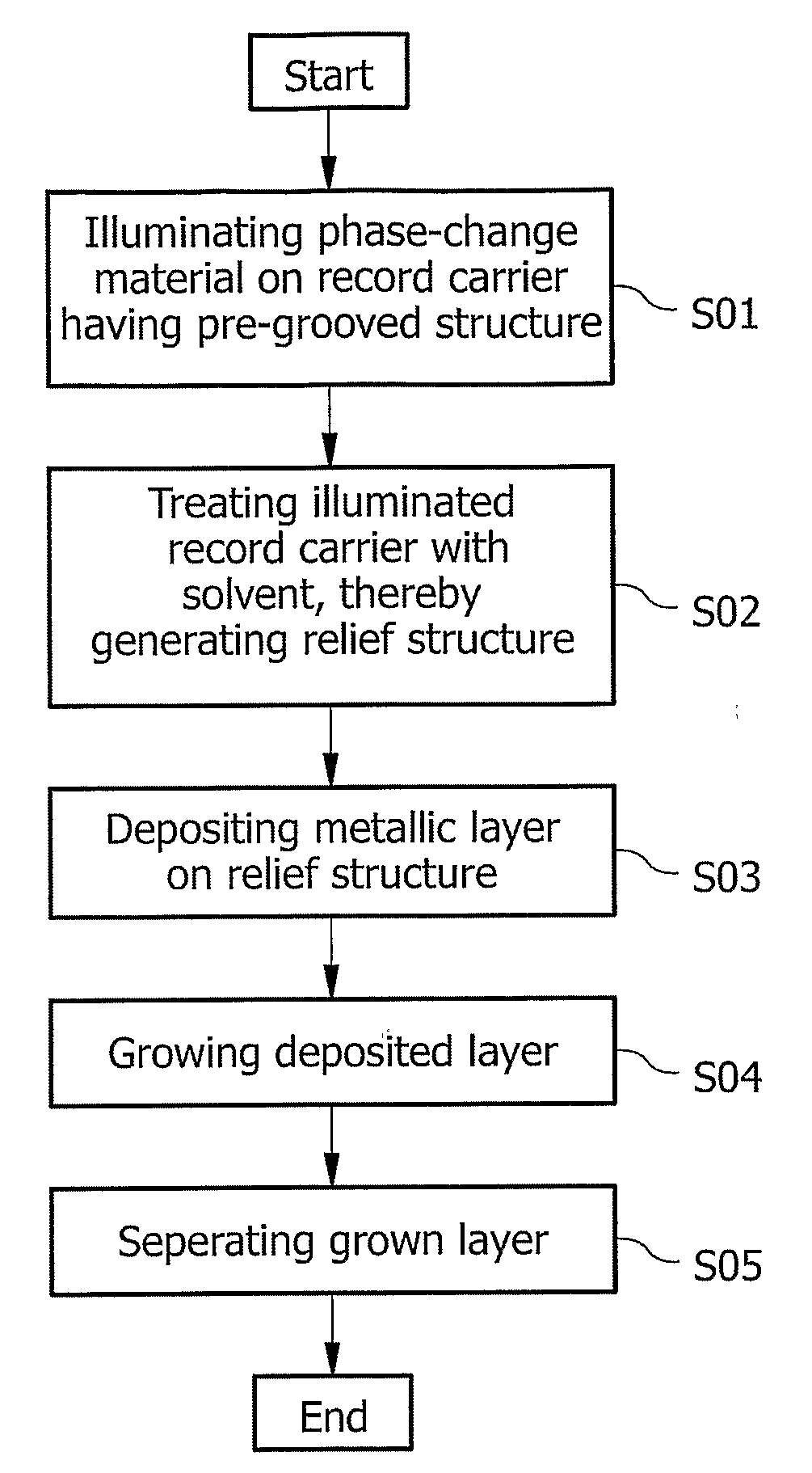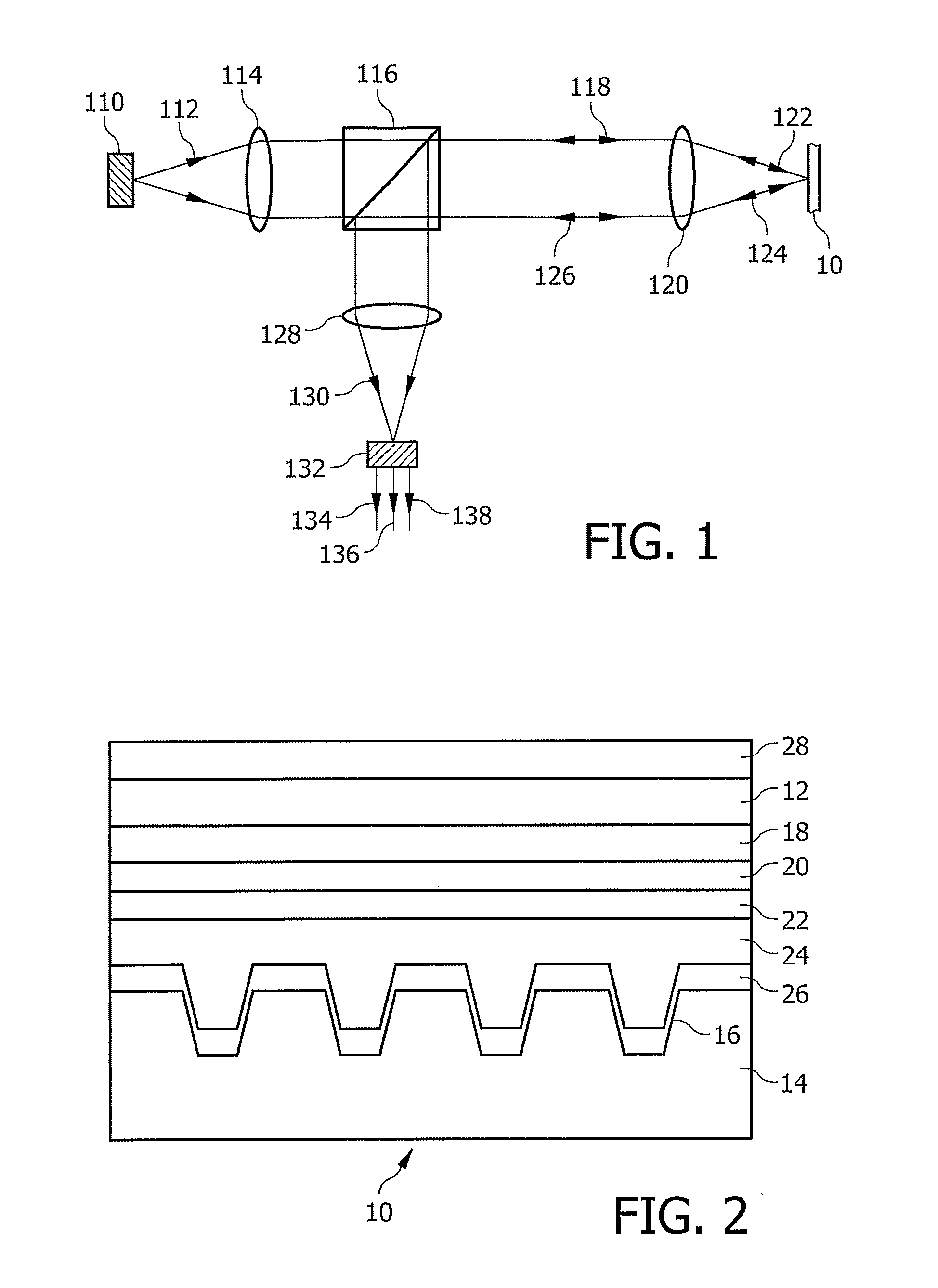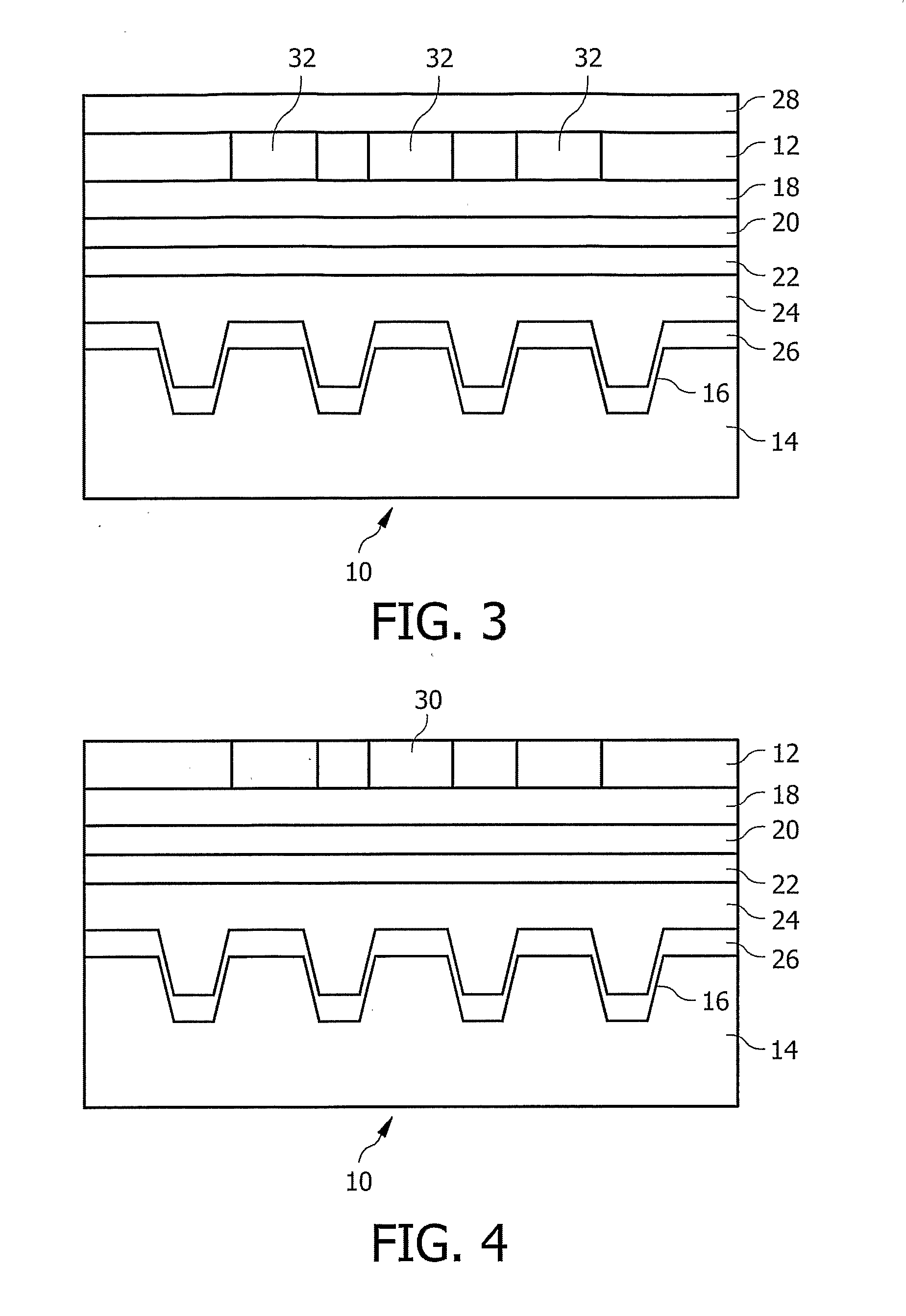Master Substrate and Method of Manufacturing a High-Density Relief Structure
a technology of high density relief and master substrate, which is applied in the direction of photomechanical treatment originals, instruments, photomechanical apparatus, etc., can solve the problems of low reflection level, local broadening, and conventional photoresist mastering is the cumulative photon effect, so as to avoid lens contamination and high numerical aperture
- Summary
- Abstract
- Description
- Claims
- Application Information
AI Technical Summary
Benefits of technology
Problems solved by technology
Method used
Image
Examples
Embodiment Construction
[0033]FIG. 1 shows a schematic set-up of a conventional optical disc drive that can be employed with the present invention. A radiation source 110, for example a semi-conductor laser, emits a diverging radiation beam 112. The beam 112 is made essentially parallel by a collimator lens 114, from which it is projected to a beam splitter 116. At least a part of the beam 118 is further projected to an objective lens 120, which focuses a converging beam 122 onto a master substrate 10. The master substrate 10 will be described in detail with reference to the figures below. The focused beam 122 is able to induce a phase change in the recording layer of the master substrate. On the other hand, the converging beam 122 is reflected into a diverging beam 124 and is then projected further as an essentially parallel beam 126 by the objective lens 120. At least part of the reflected beam 126 is projected to a condenser lens 128 by the beam splitter 116. This condenser lens 128 focuses a converging...
PUM
| Property | Measurement | Unit |
|---|---|---|
| wavelength | aaaaa | aaaaa |
| thickness | aaaaa | aaaaa |
| thickness | aaaaa | aaaaa |
Abstract
Description
Claims
Application Information
 Login to View More
Login to View More - R&D
- Intellectual Property
- Life Sciences
- Materials
- Tech Scout
- Unparalleled Data Quality
- Higher Quality Content
- 60% Fewer Hallucinations
Browse by: Latest US Patents, China's latest patents, Technical Efficacy Thesaurus, Application Domain, Technology Topic, Popular Technical Reports.
© 2025 PatSnap. All rights reserved.Legal|Privacy policy|Modern Slavery Act Transparency Statement|Sitemap|About US| Contact US: help@patsnap.com



